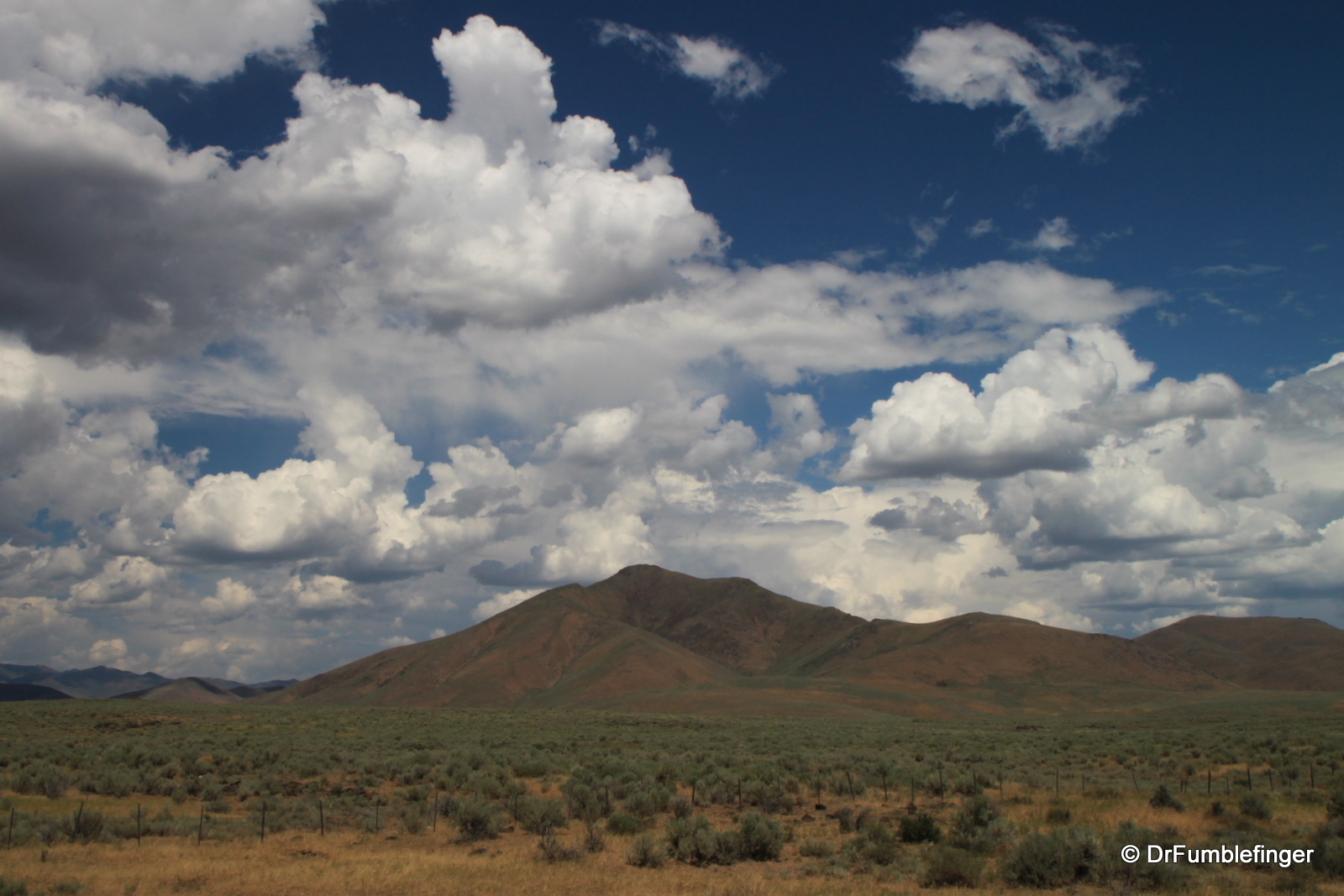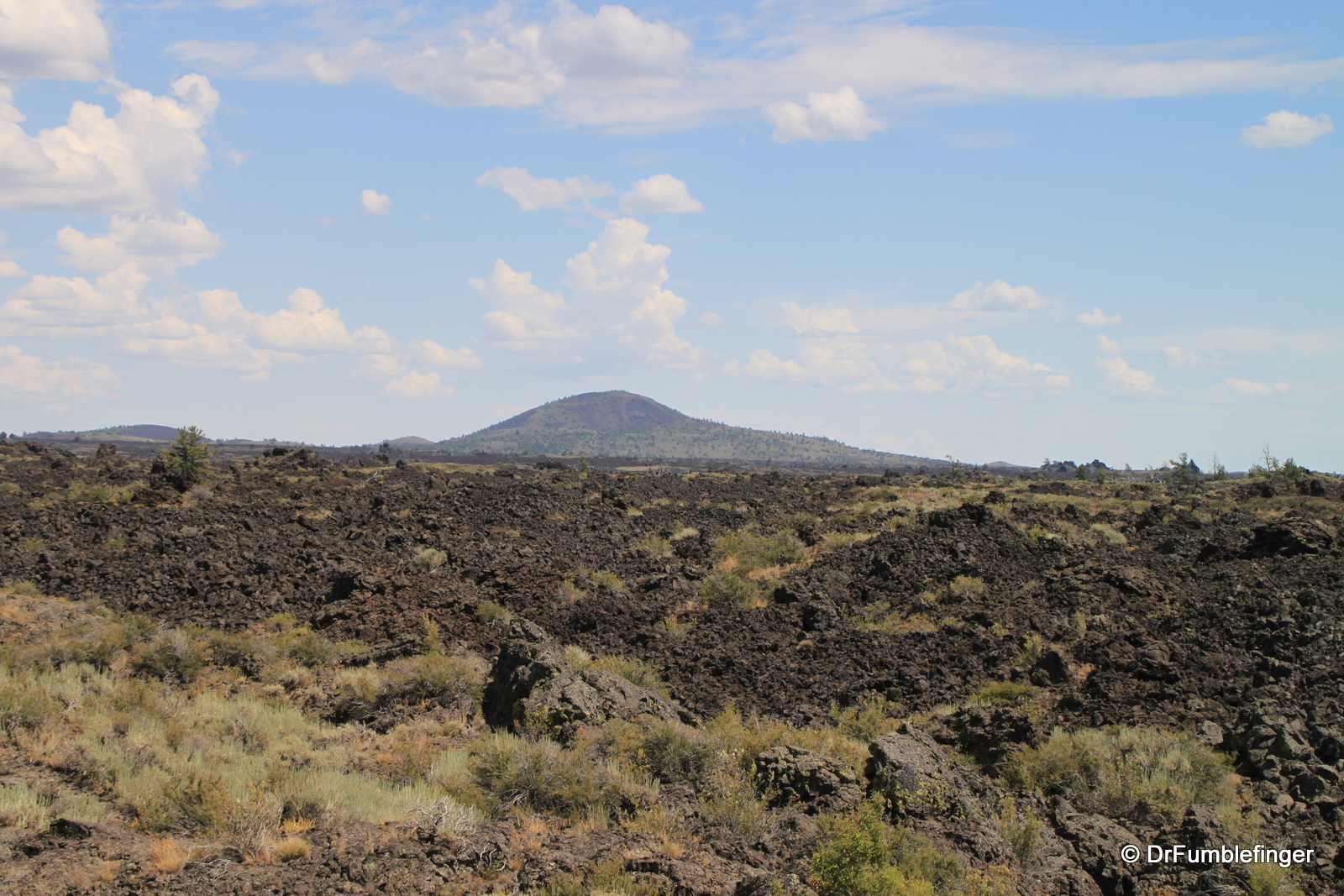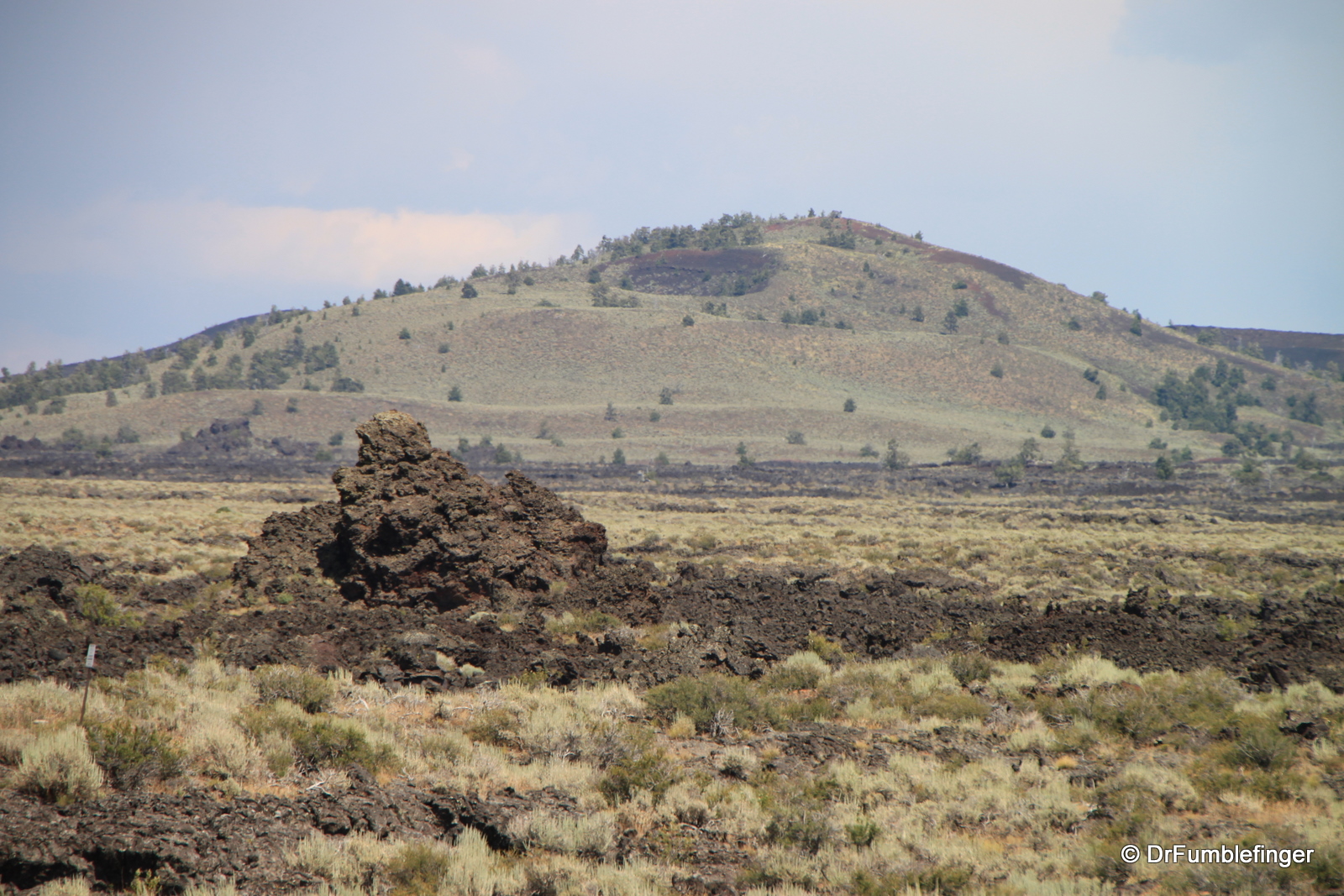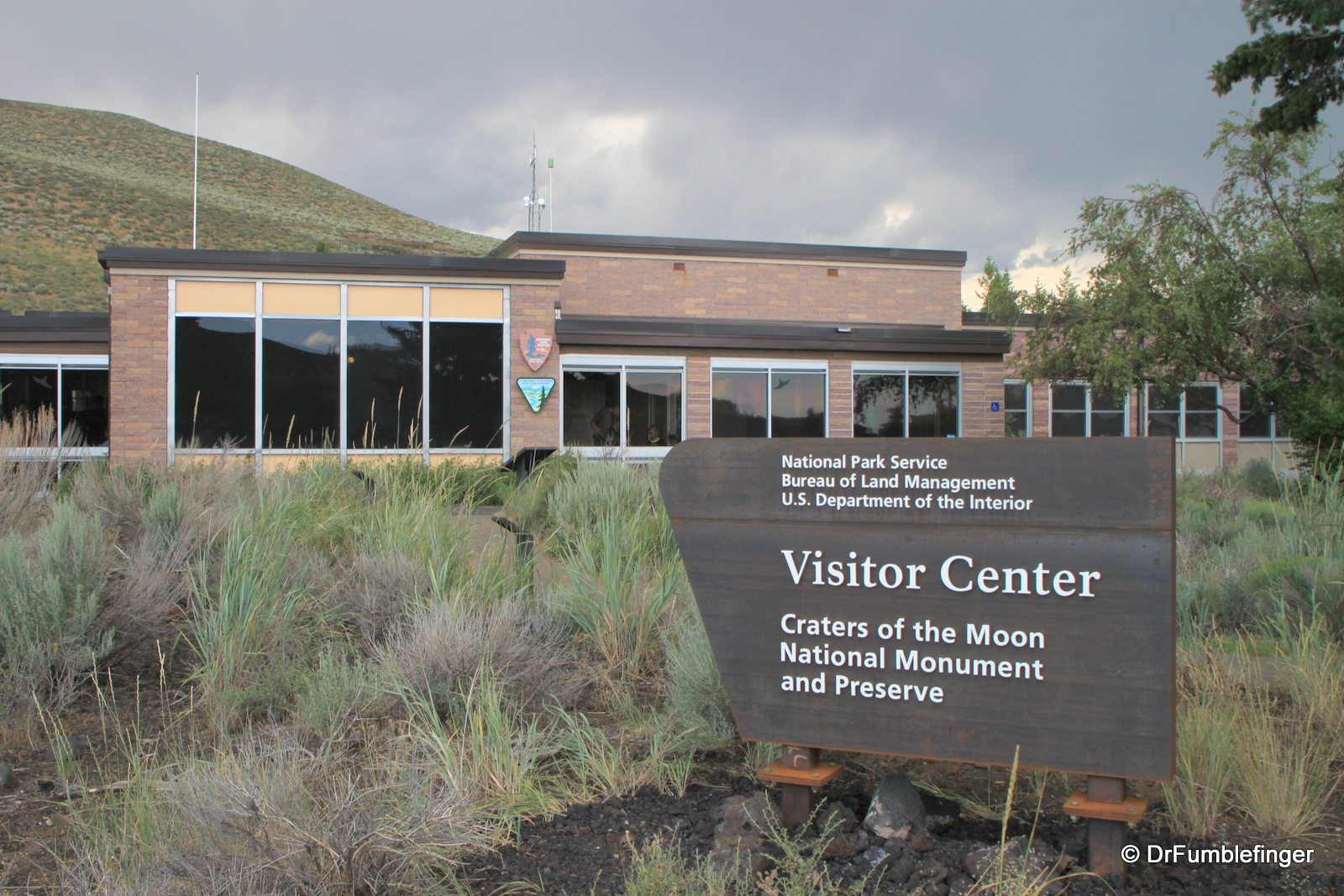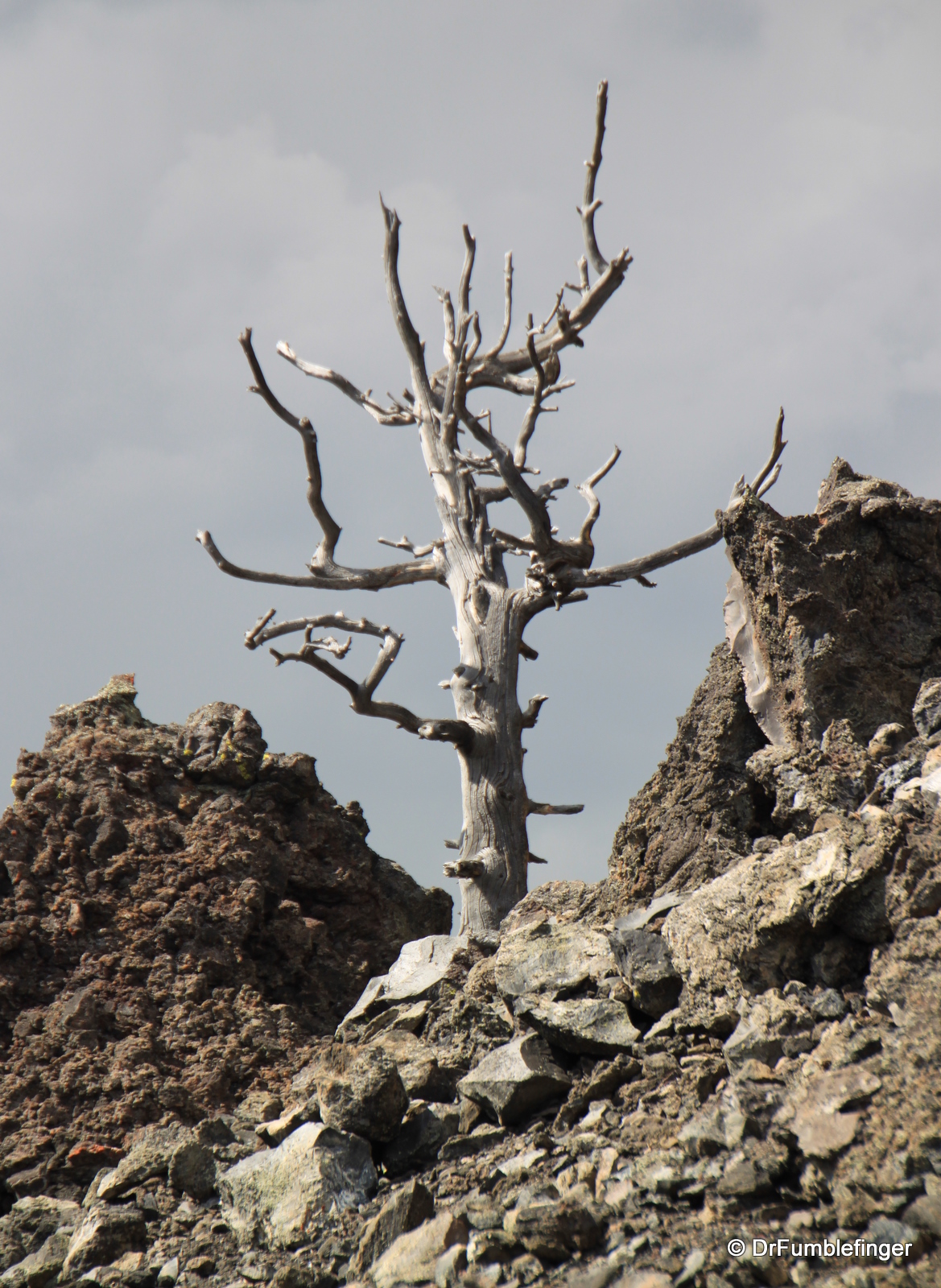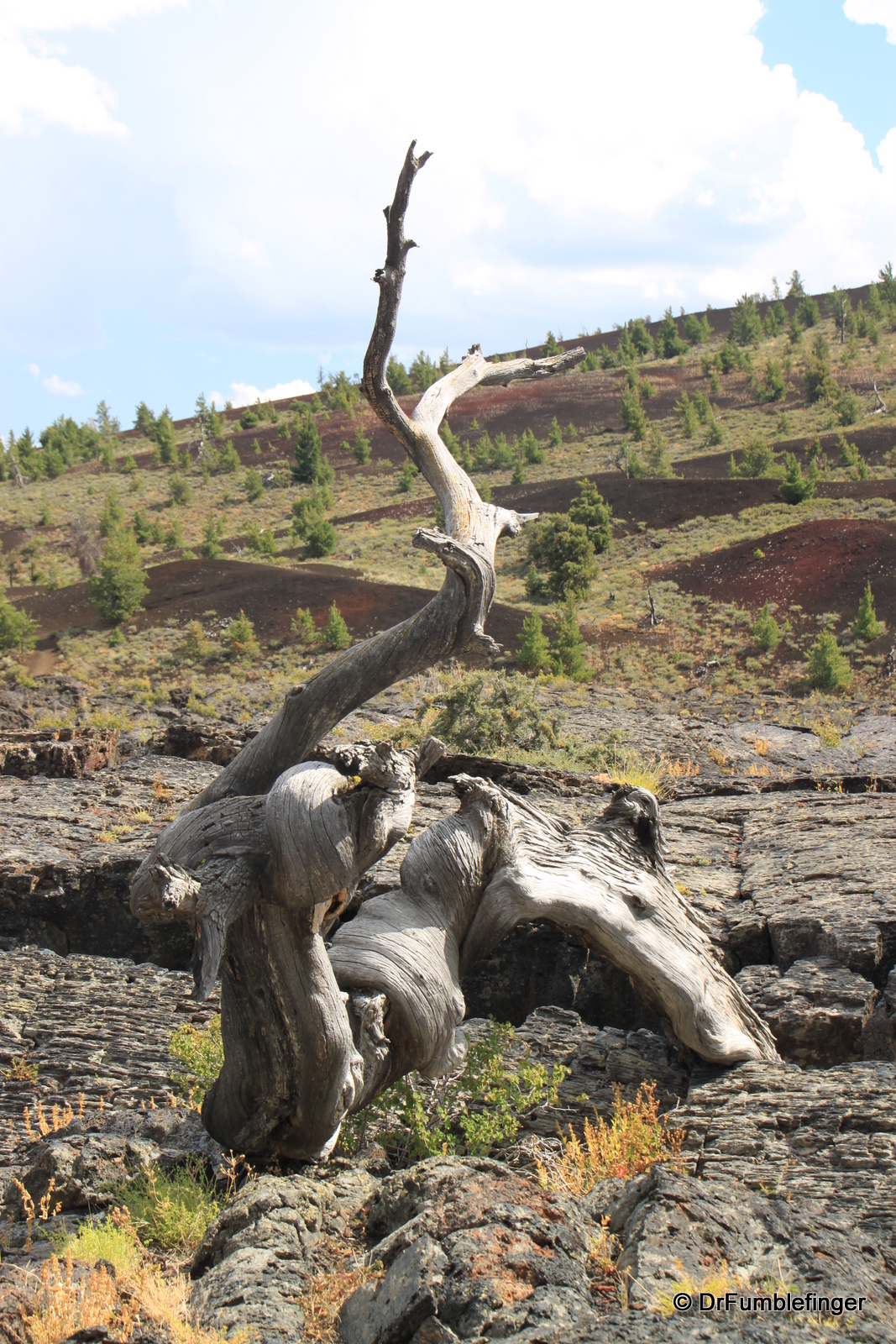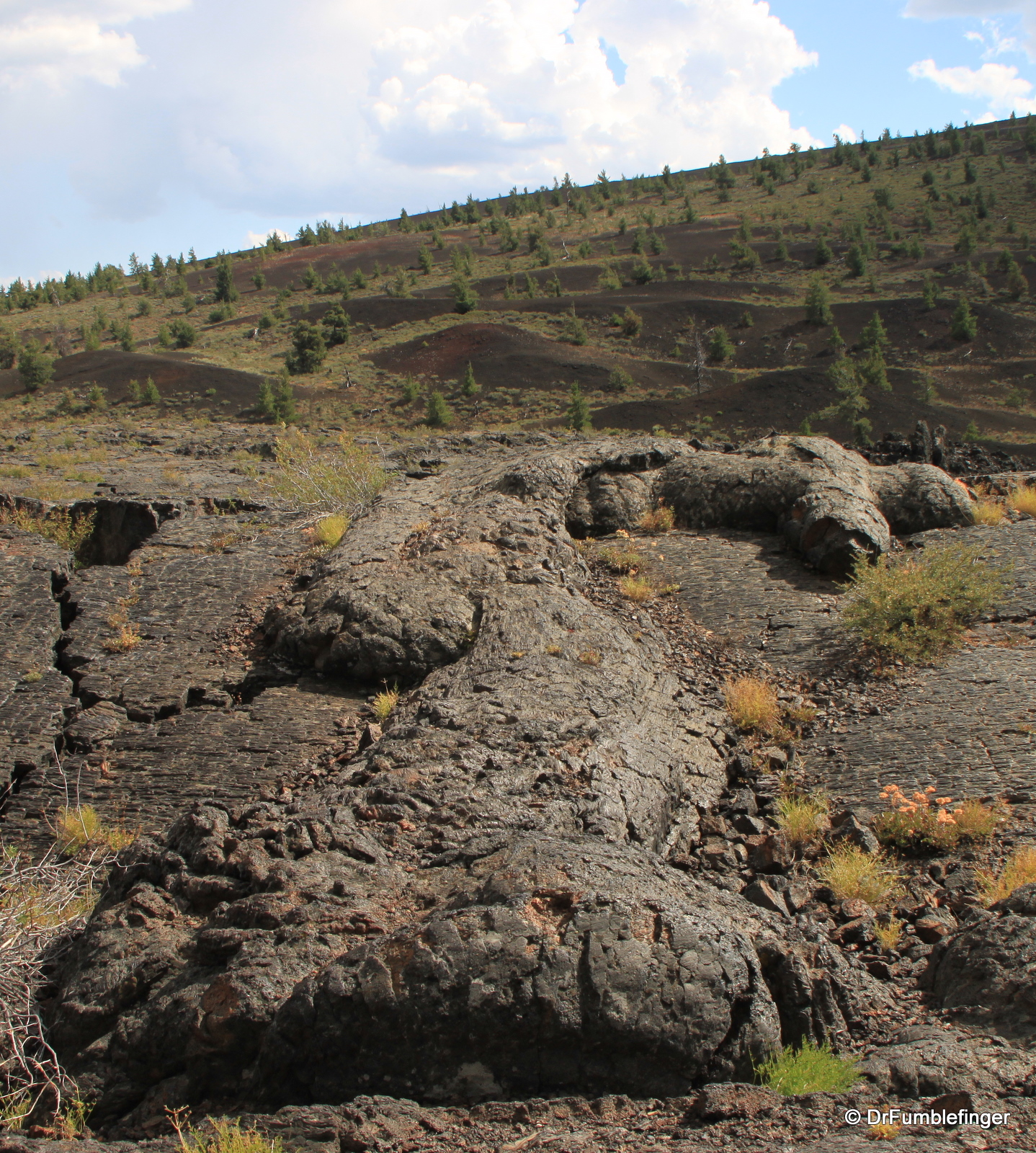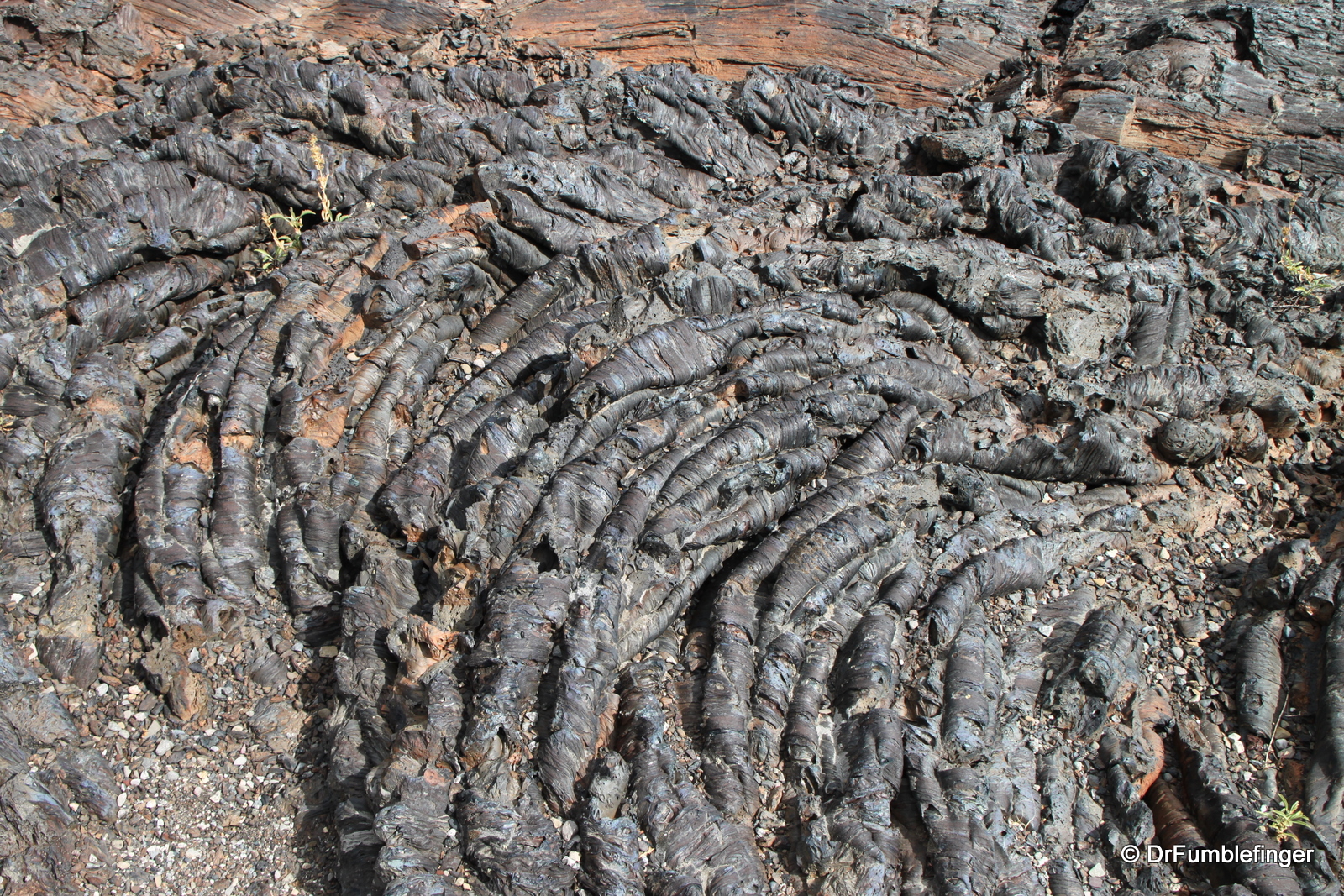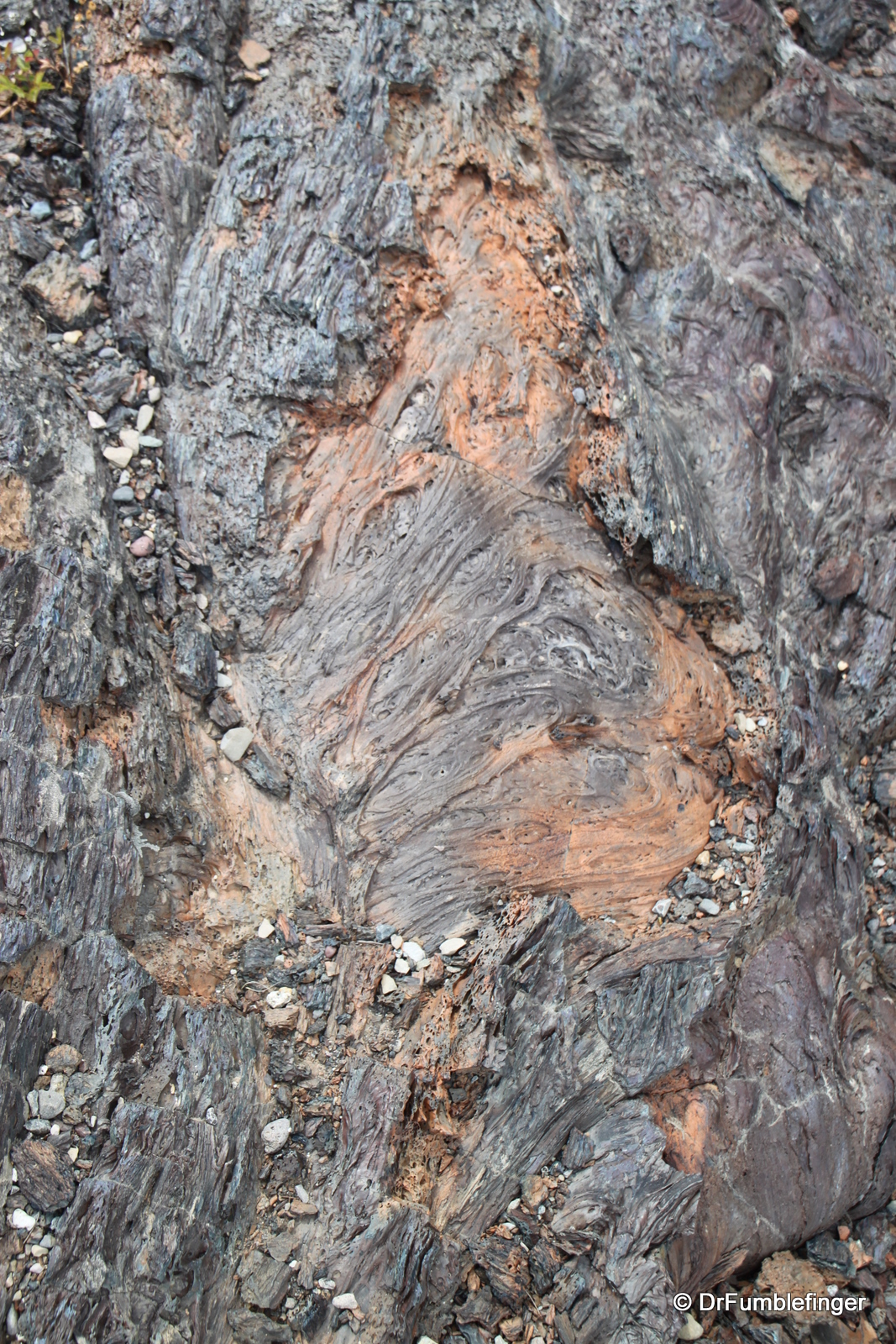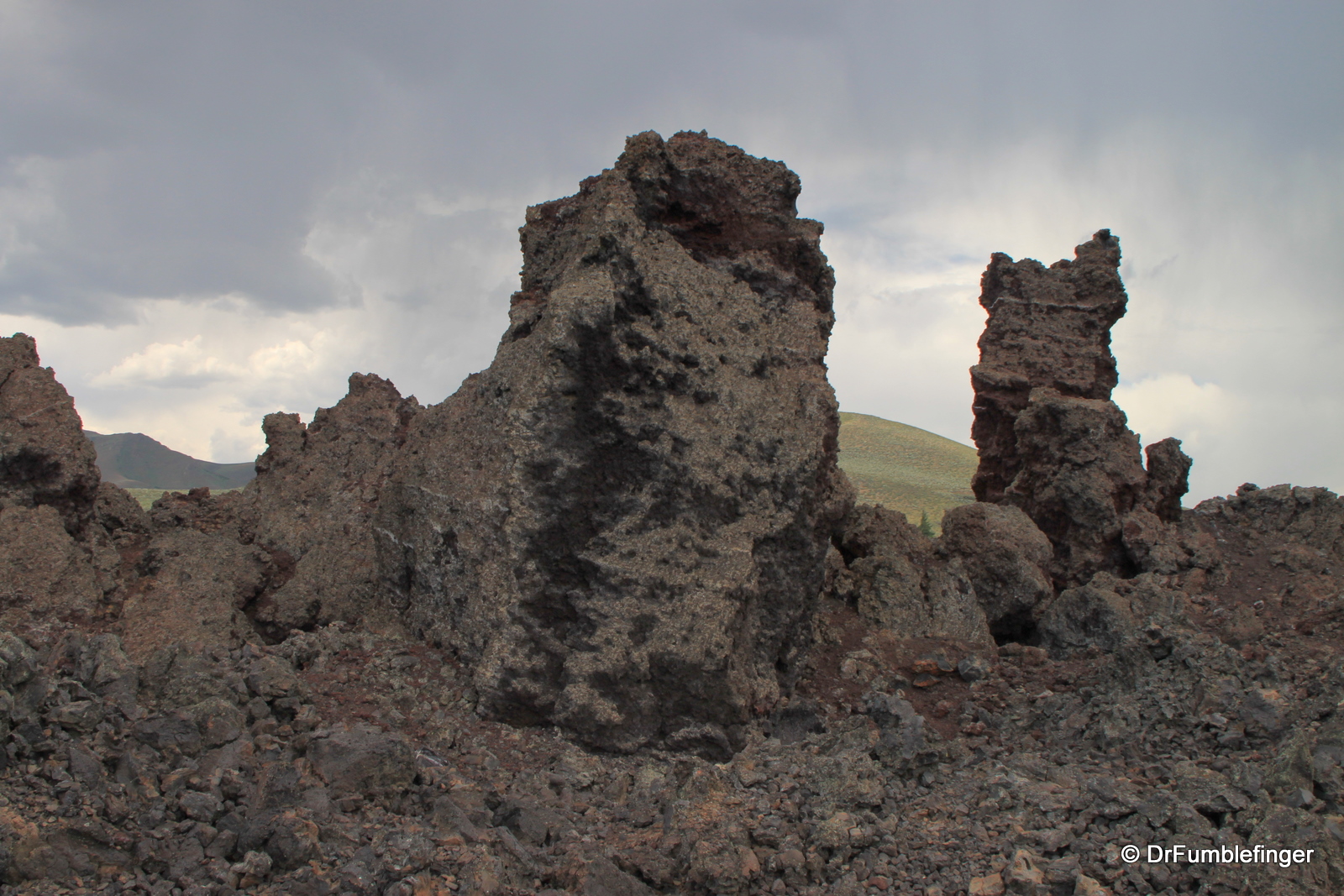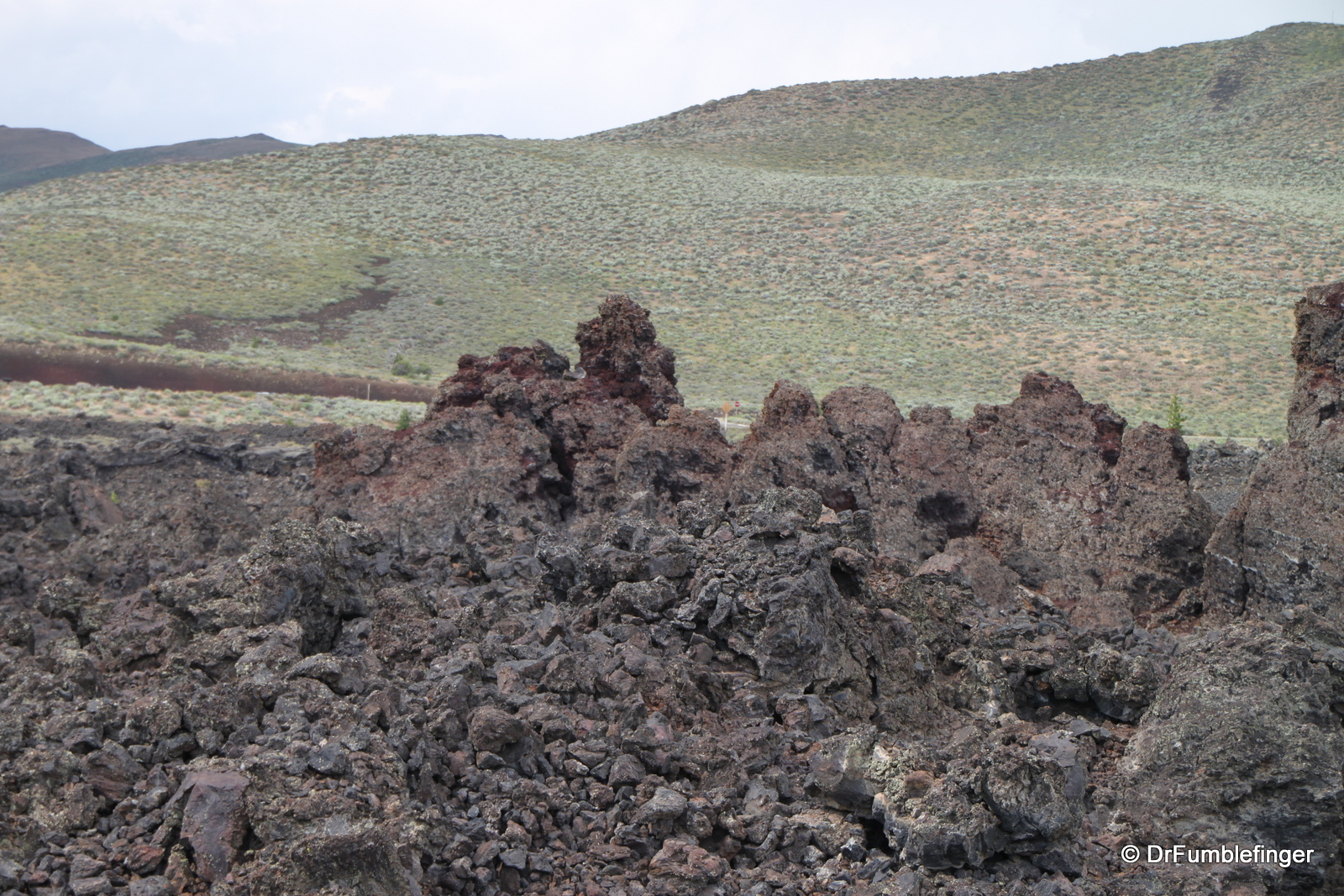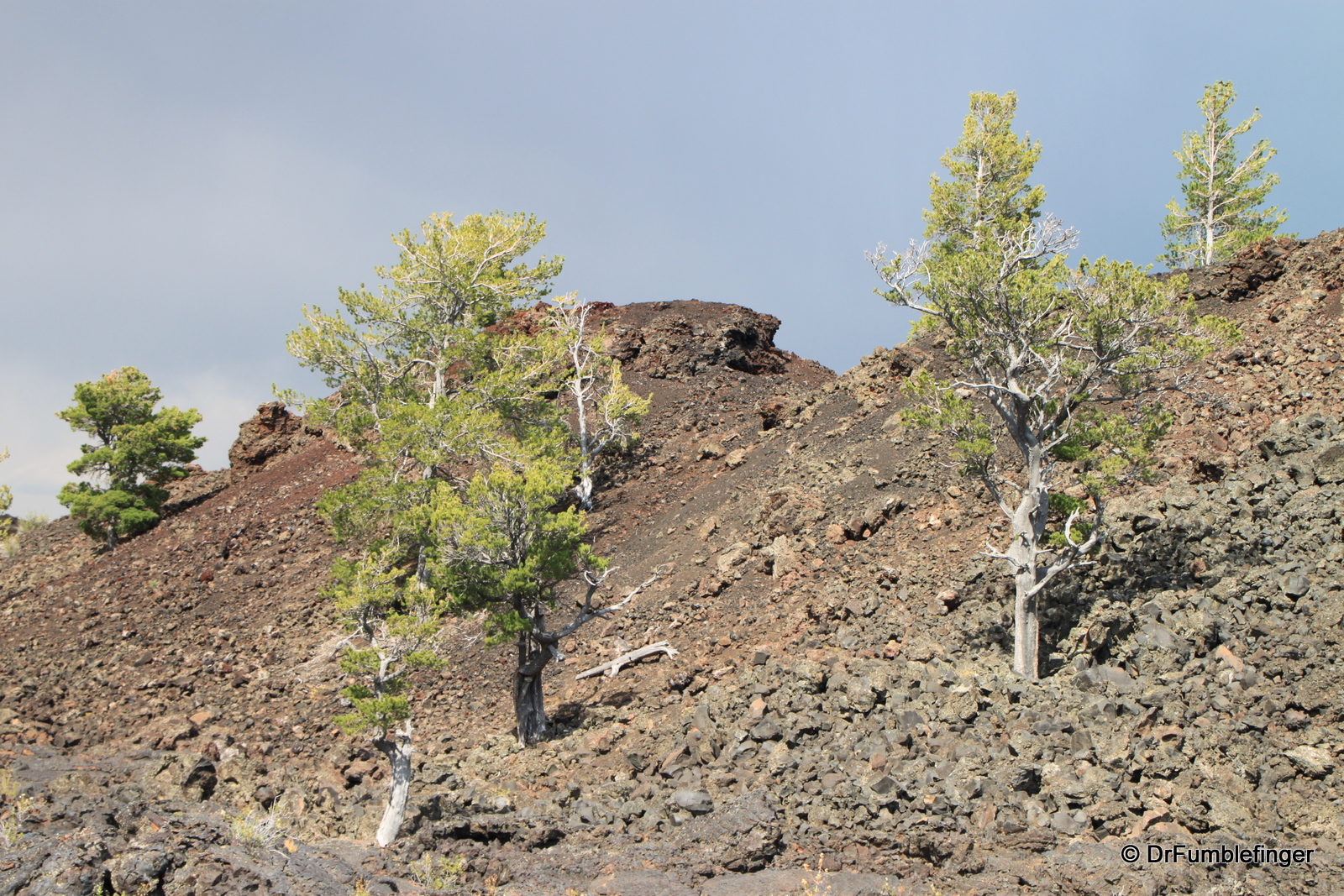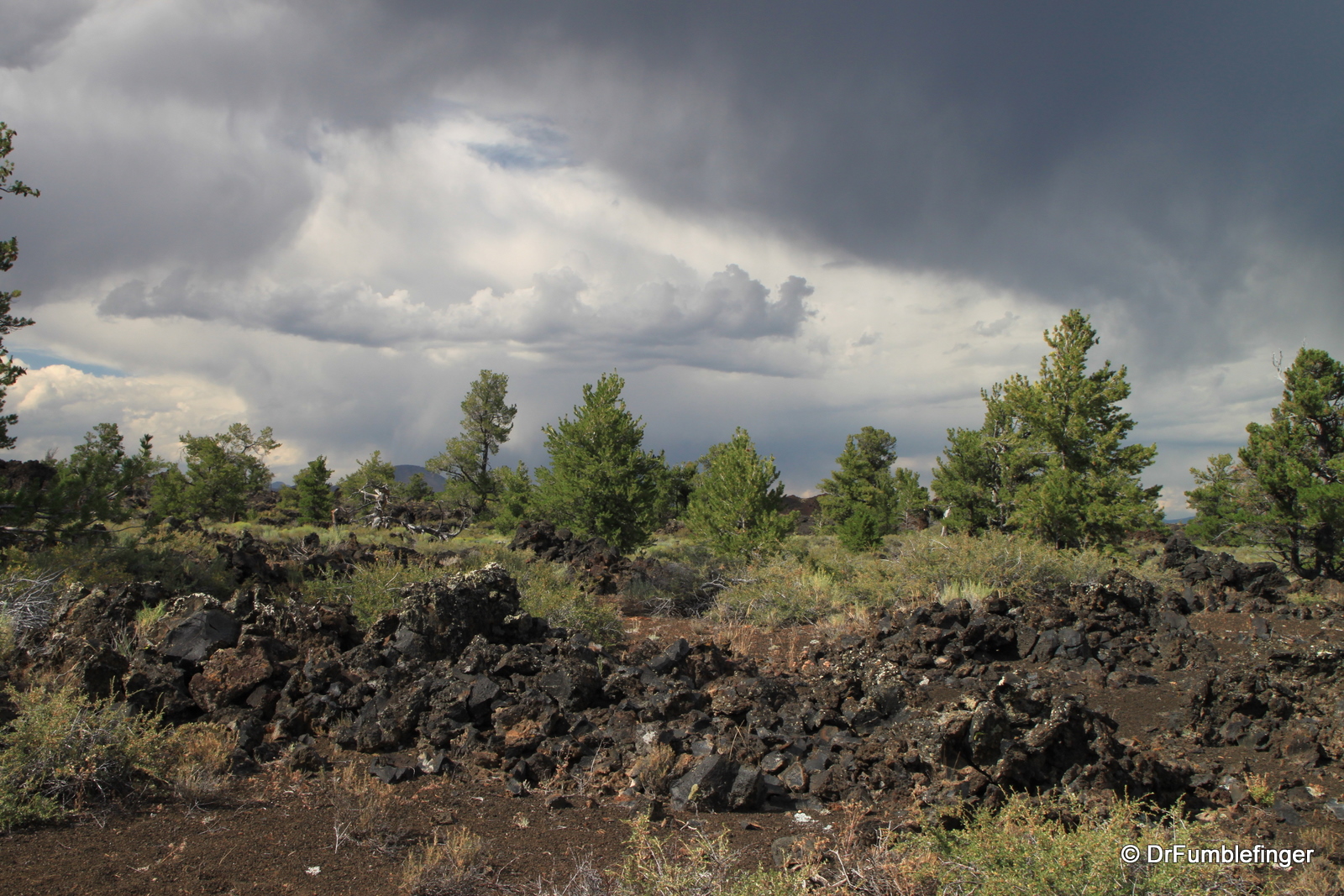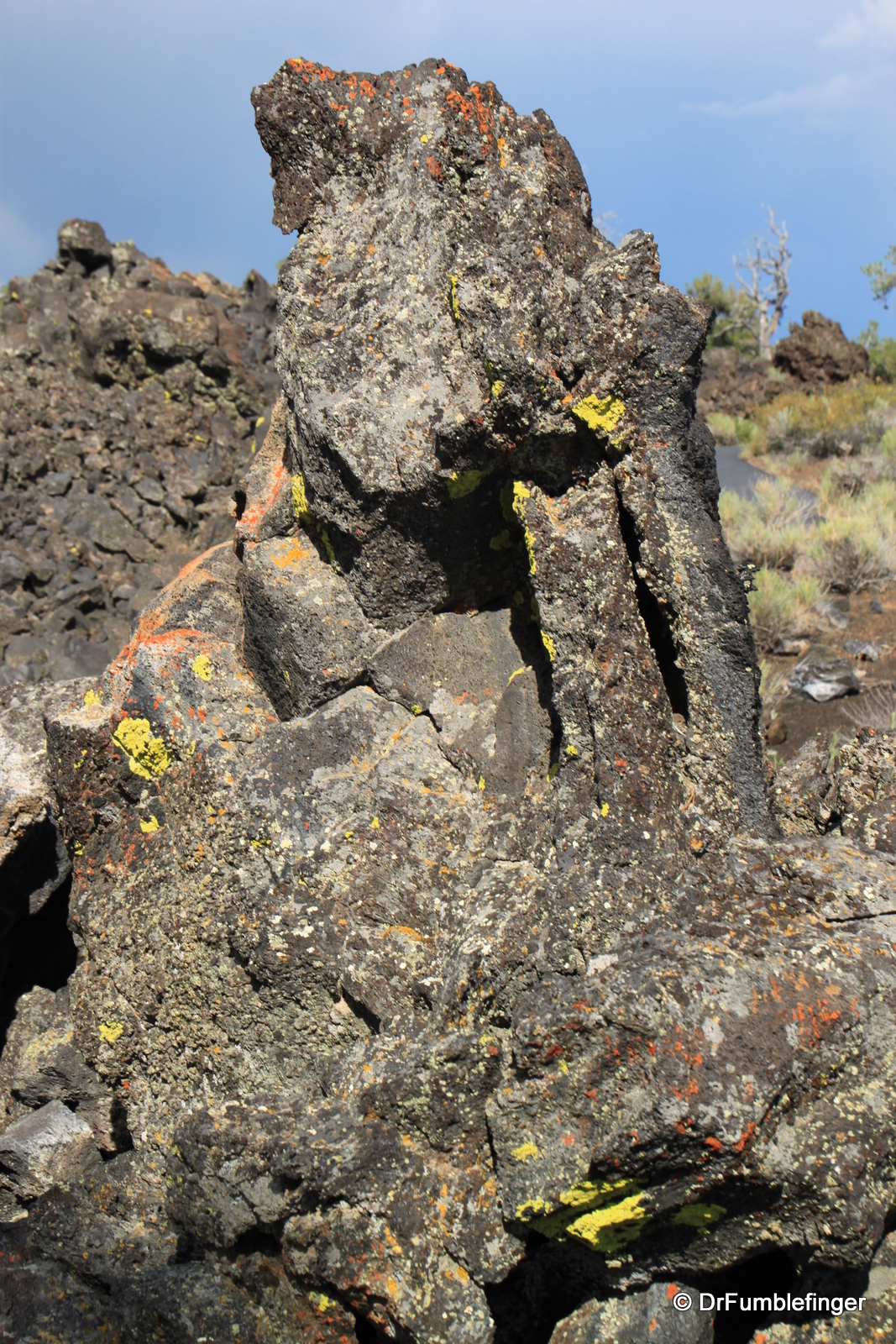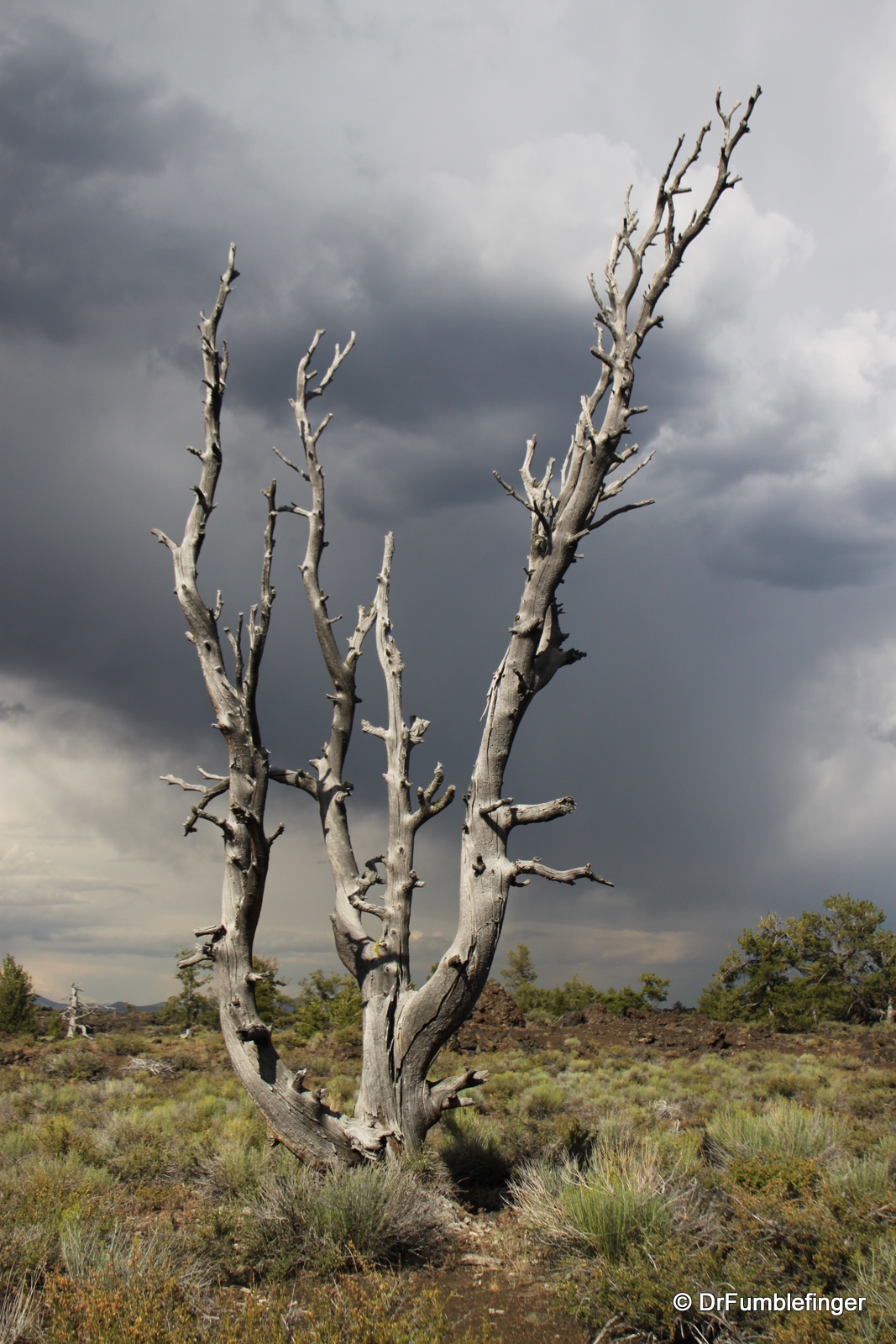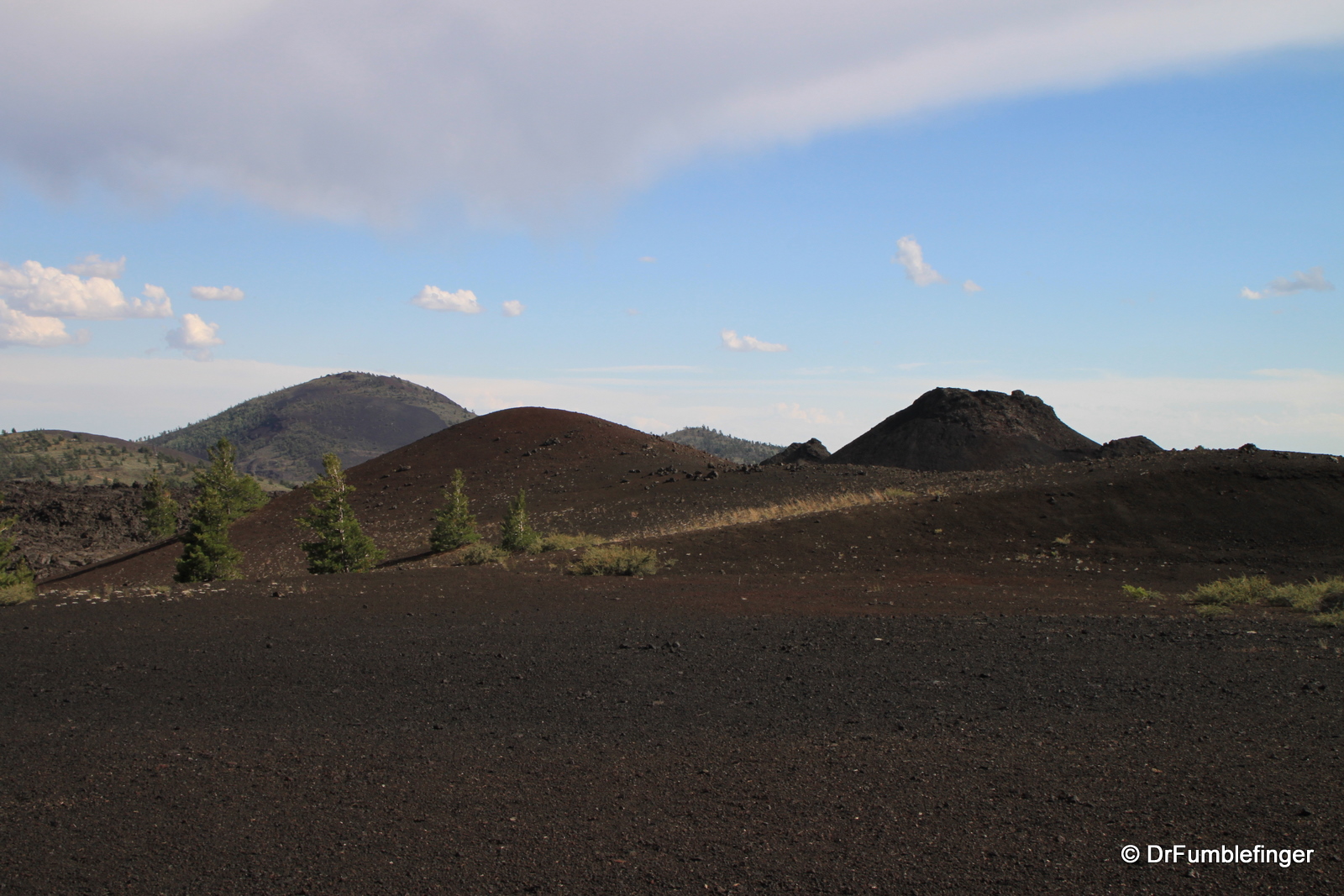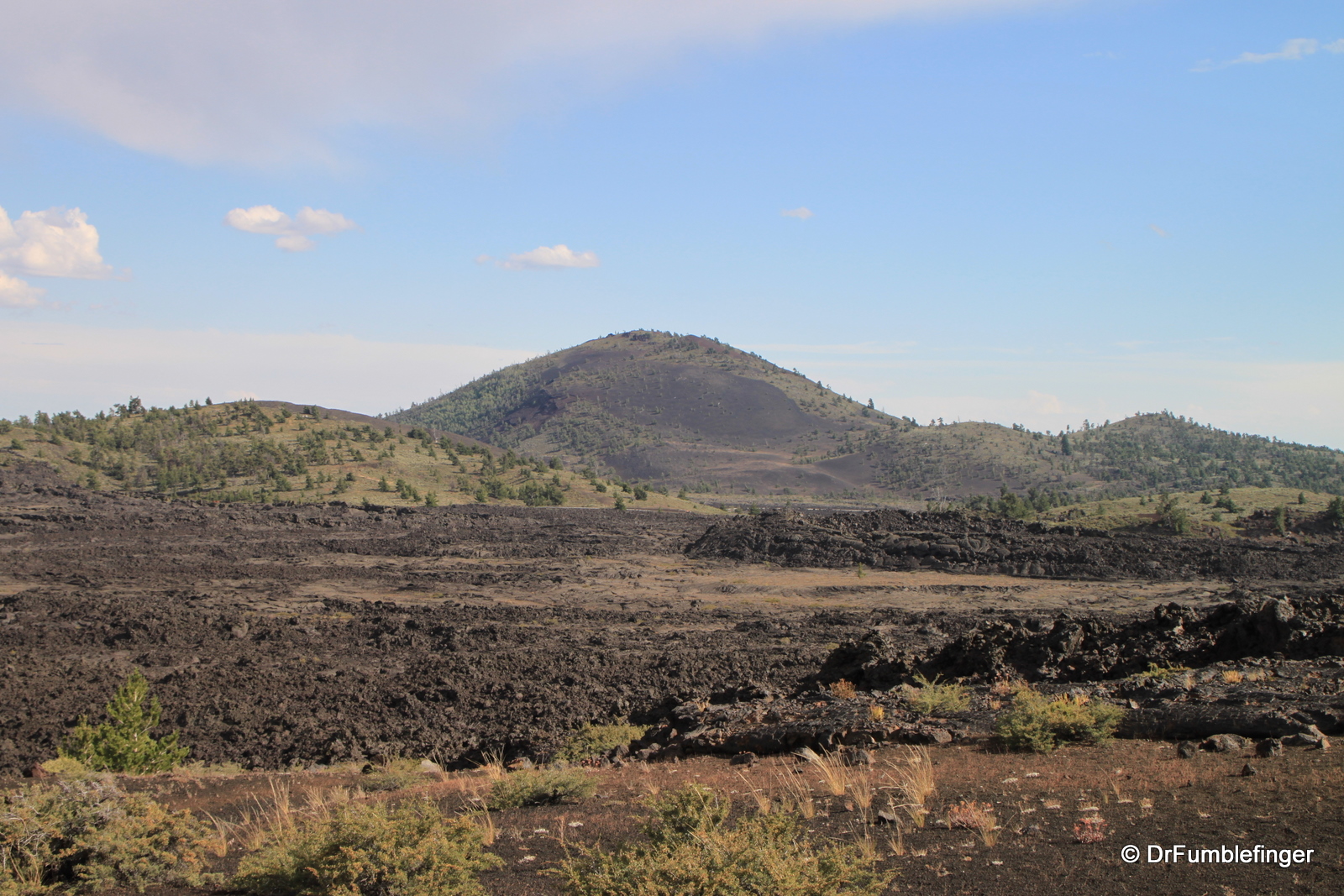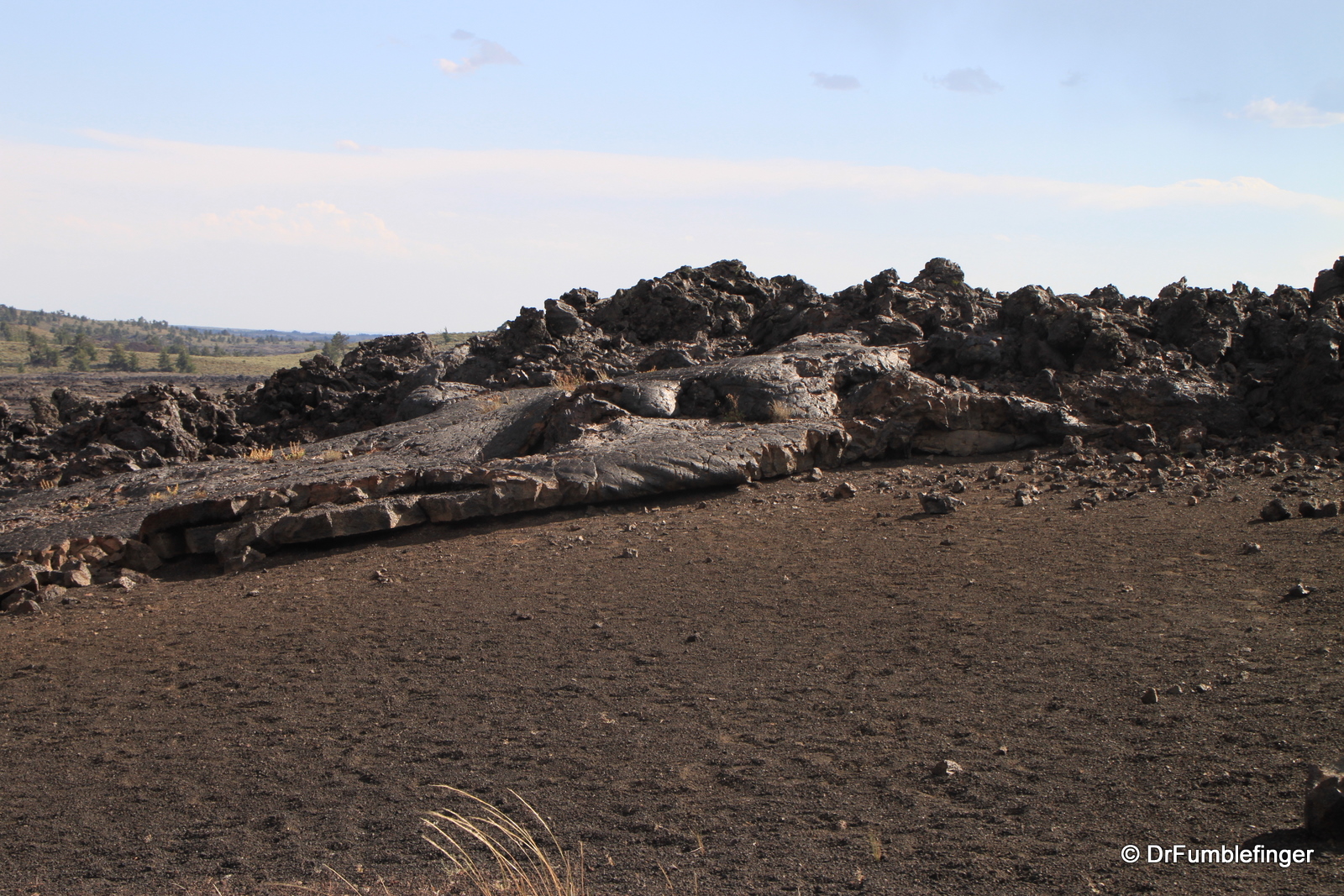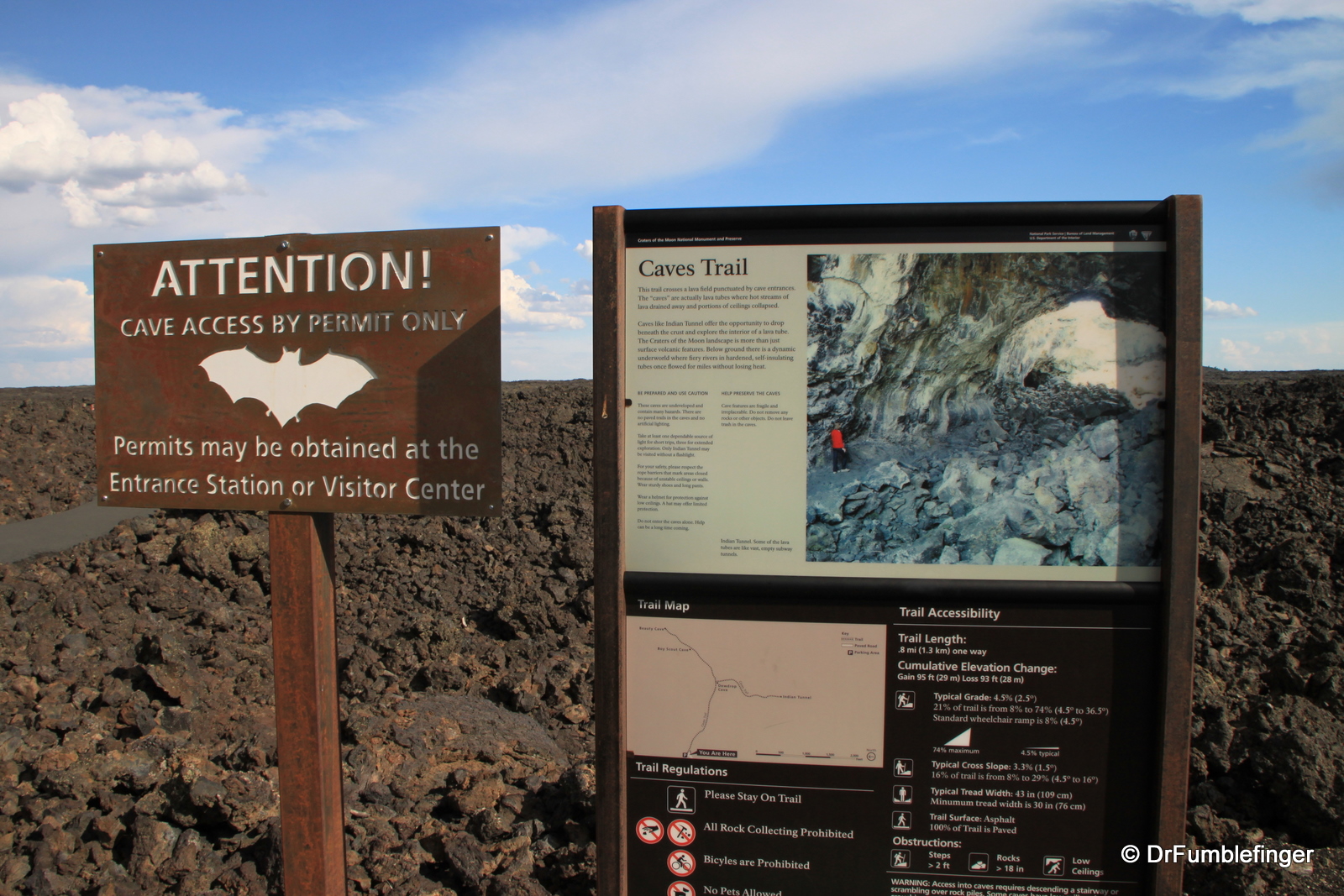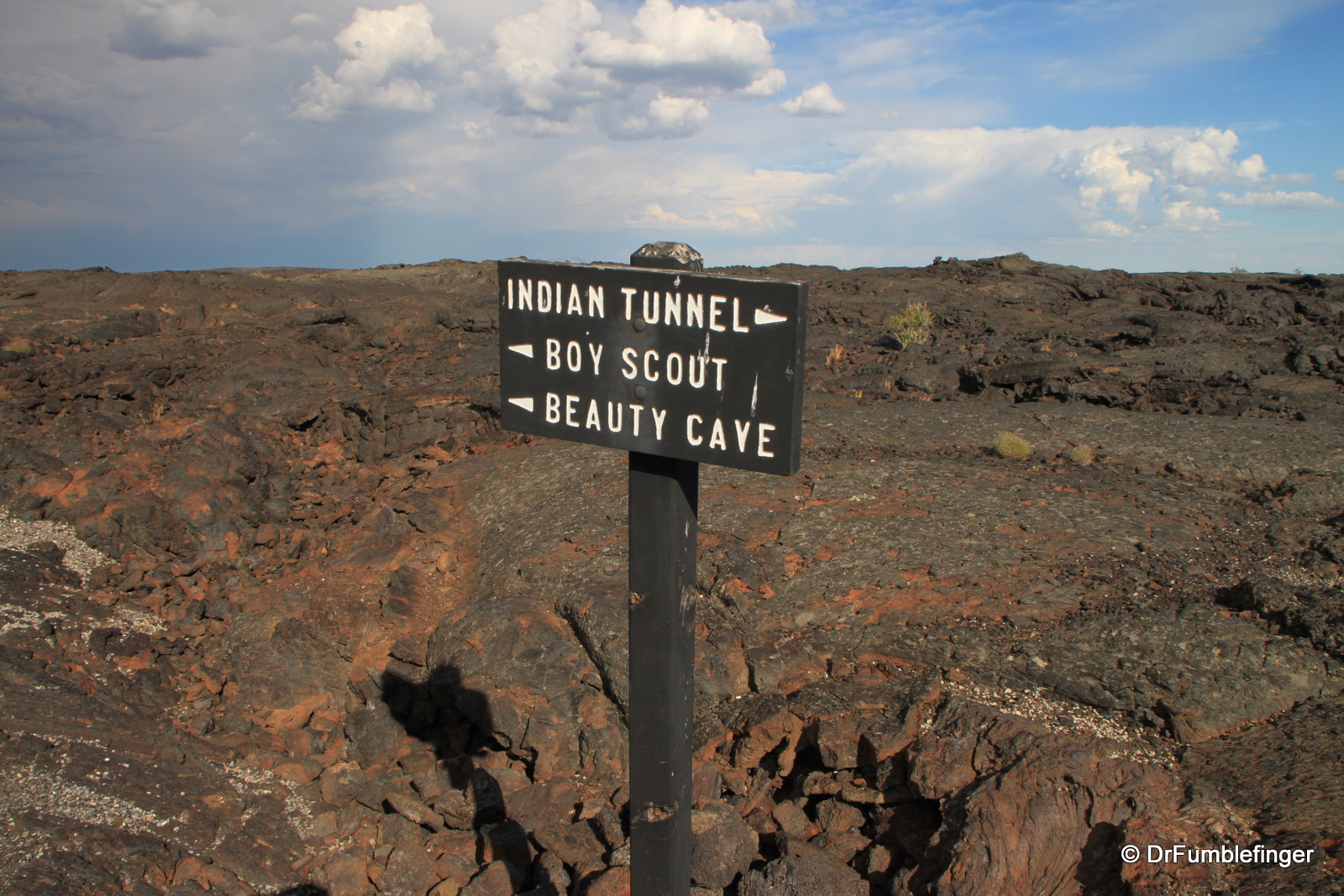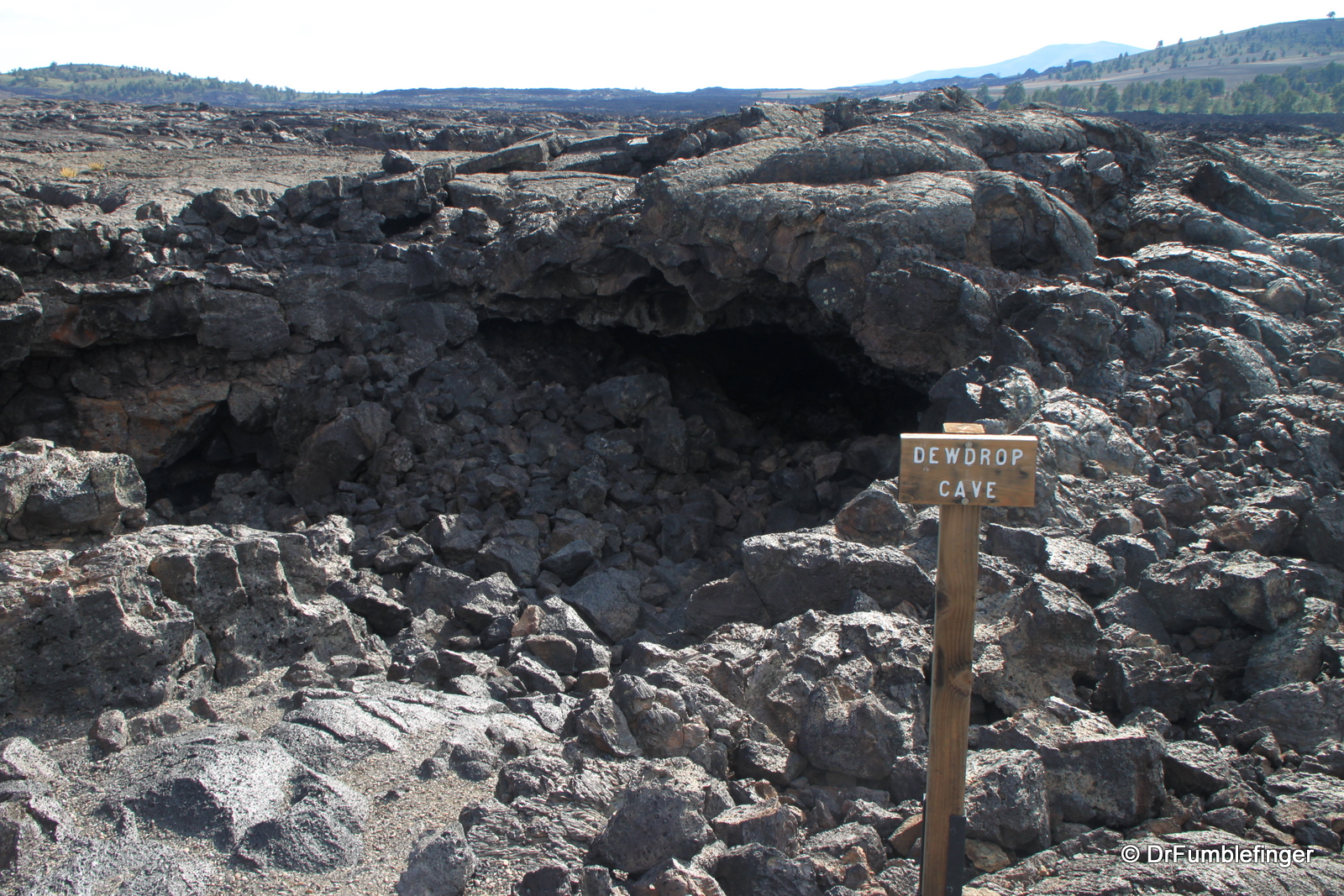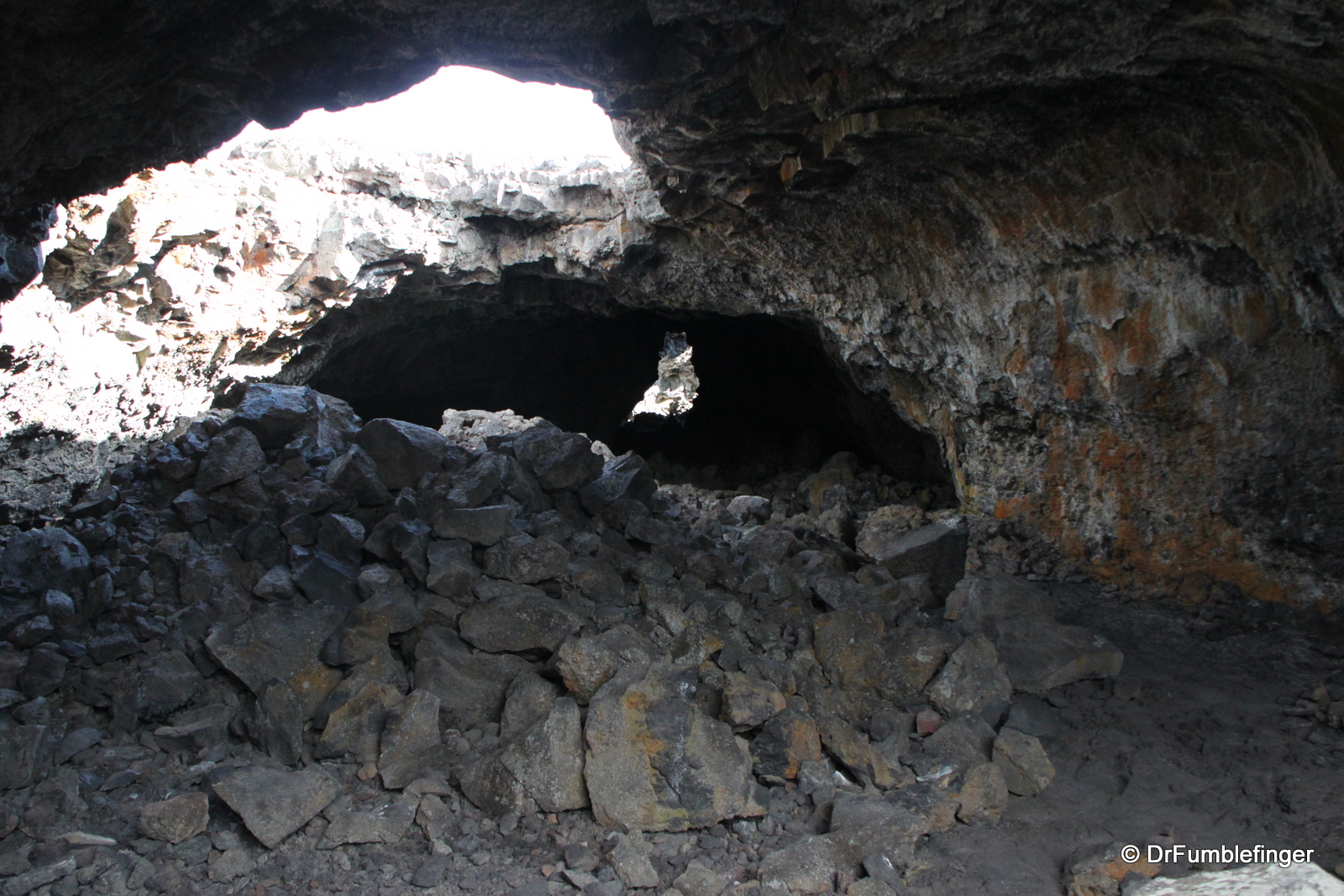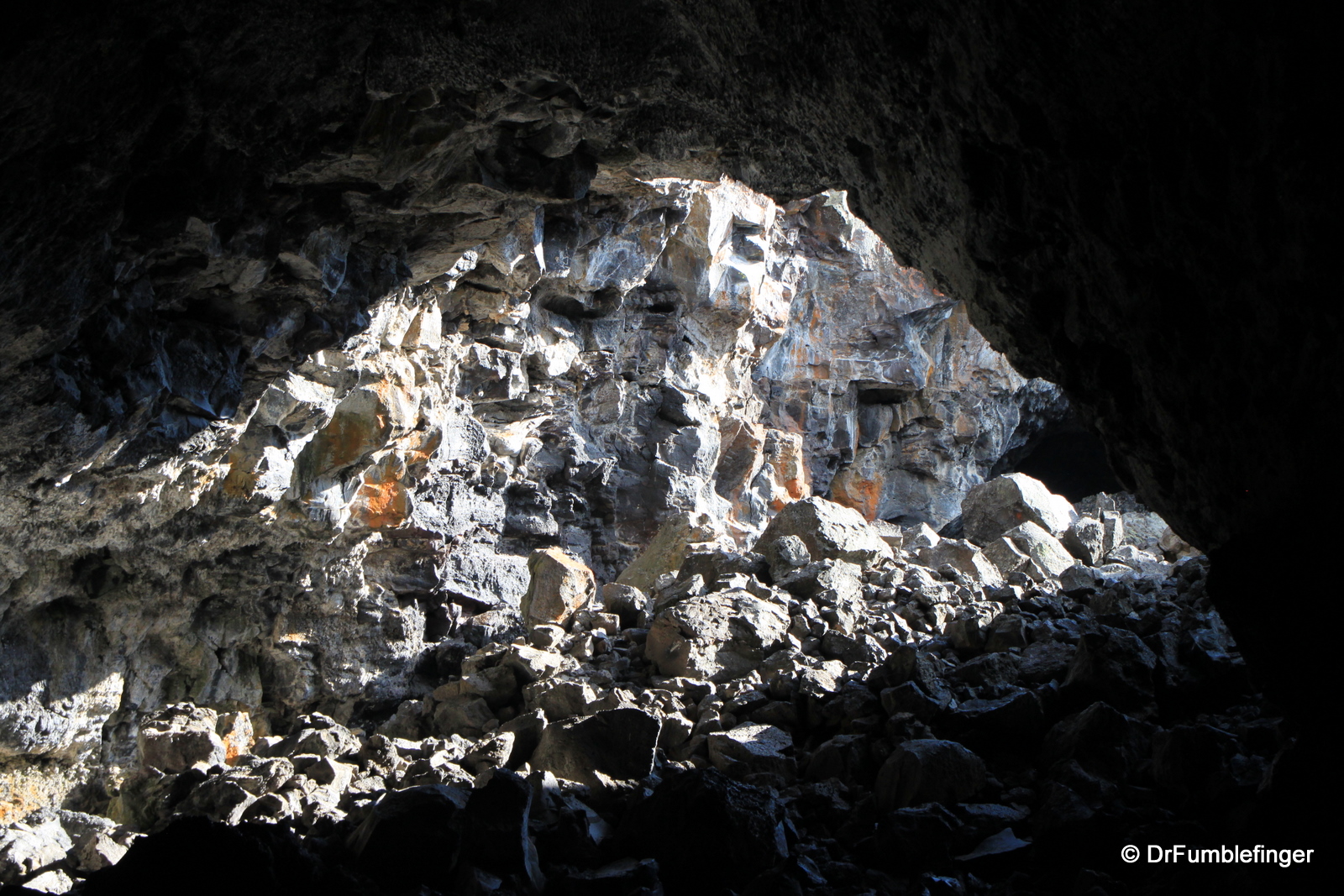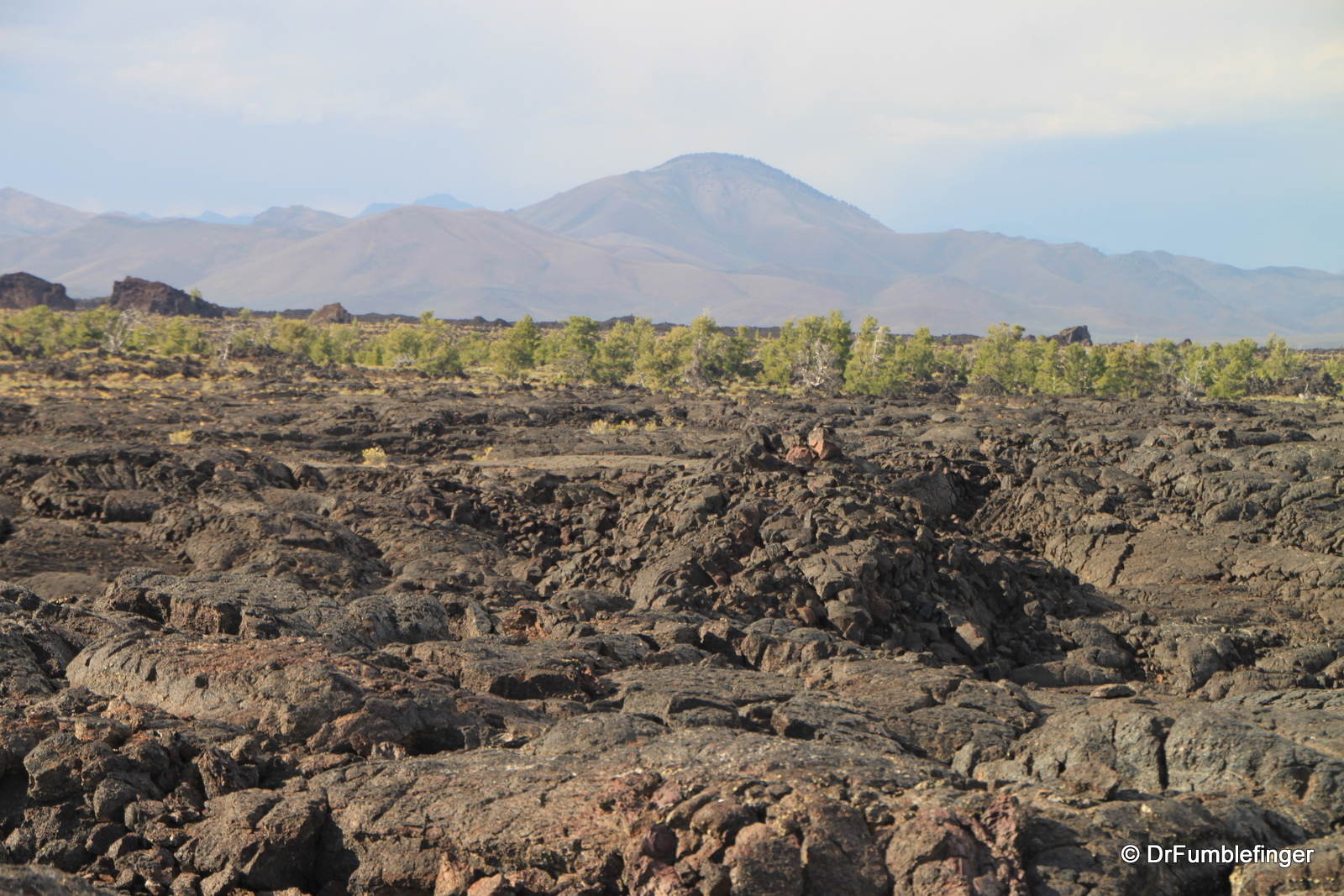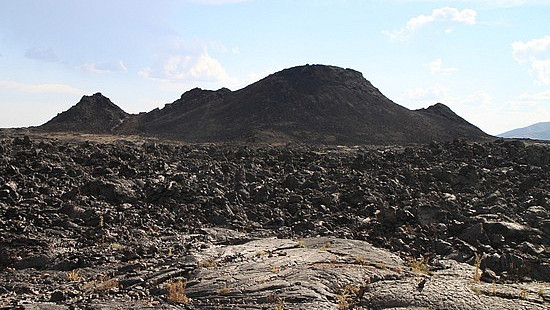
Sometimes as I reflect on my travels, trends stand out that I might otherwise never have noticed. For example, I’d not have thought myself unusually interested in volcanoes or lava, but in the past year I’ve visited three locations rich in recent volcanic history — Iceland, the Big Island of Hawaii and now the Snake River Plain in Southern Idaho. So at some subconscious level I must be deeply fascinated by volcanism and lava flows.
Idaho is a state rich in natural beauty and is one of my favorite places to explore. It’s a mountainous land (home of its big timber business) with several grand lakes and fertile plains (where all those big potatoes are grown). This was my second visit to the unearthly landscape of Craters of the Moon, the first having been during my teens when visiting with my family (en-route from Yellowstone National Park to Portland, Oregon).

Devil’s Orchard Trail, Craters of the Moon NM
A Brief history of Craters of the Moon National Monument
The Snake River Plain has been the site of multiple volcanic eruptions. Millions of years ago this activity occurred close to the Idaho/Oregon border, in what is known as the Yellowstone Hot Spot. This focus has remained geologically active ever since but the earth’s crust (North American Plate) has slowly migrated to the southwest and with this migration there have been a string of major eruptions across this plain, most recently near Yellowstone National Park underneath which the hot spot now resides. Scientists are concerned about the potential of a major volcanic eruption in or near Yellowstone National Park sometime in the next millennium (but don’t lose any sleep over this — go and enjoy Yellowstone’s great beauty). The last volcanic eruptions in Craters of the Moon are thought to have occurred some 2000 years ago.
The rough lava fields made the region inhospitable to the Indians and pioneer settlers (who called it “devil’s vomit”); wisely, most people avoided the rough lava. The Shoshone had a few trails that allowed them to migrate through the lava fields and they left behind rock rings of uncertain significance. The Oregon Trail passed south of the region, although some pioneers headed north of the Craters of the Moon on Goodale’s Cutoff. In the early 20th century people with imagination began to promote the craters and lava fields as being moon-like and argued for conservation of the region. The area was declared a National Monument by President Calvin Coolidge in 1924, to preserve ‘a weird and scenic landscape peculiar to itself”. The name came from the belief that the moon (which had only been seen by a telescope at that time) consisted of craters and dark lava much like was found here in Southern Idaho. Of interest, the Apollo 14 astronauts explored the landscape as part of the training for their moon-launch, giving some credence to the name “Craters of the Moon”.

Lava flow, Craters of the Moon
What you’ll see at Craters of the Moon National Monument.
The Monument is massive (750,000 acres; 1100 square miles; about the size of the state of Rhode Island) although you can only easily access a small part of it. A single road transects Craters at the northern aspect, almost at the limits of the most recent lava flows. You’ll be driving through seemingly endless fields of rough black lava rock before you arrive at the monument’s visitor center, which is a worthwhile first stop (as is true of most visitor centers in the American National Park system). There is a quality film playing every half hour that outlines the history of the area and special exhibits and photos of the monument during all four seasons, including when it is shrouded in a blank of pure white snow (it’s a great snowshoeing and cross country skiing destination).
There’s a narrow, windy 7 mile drive that loops through the lava field with several stops and trails, all worth your time if possible. These include opportunities to walk through lava fields and up some craters. You’ll have the opportunity to explore several lava tube caves if you’re interested (note: the parks are attempting to eradicate white-nose syndrome which is a fatal infection of bats that can be transmitted from cave to cave, so check with the rangers before entering the caves). You’ll see cinder cones and splatter cones, and tree molds (lava trees). Most of the walks are fairly short and have a developed path through the extremely treacherous native lava. The landscape seems barren but, as with most desert environments, a variety of plant and animal life thrives here.

Indian Tunnel Cave, Craters of the Moon NM
The day we visited a large thunderstorm passed over, mostly to the north but giving the monument a fresh shower and pleasant changing light. The sagebrush that dominates the landscape has an especially strong yet pleasant fragrance after a rain. The weather can be very hot in the summer, with the black lava rock absorbing the heat, and it’s often windy.
Craters of the Moon National Monument is an otherworldly place that can be satisfyingly explored in one full day. It’s sort of in the middle of no where so driving there takes some effort but it’s well worth your time to do so.
(Click on thumbnails to enlarge, then right arrow to advance the slideshow)

